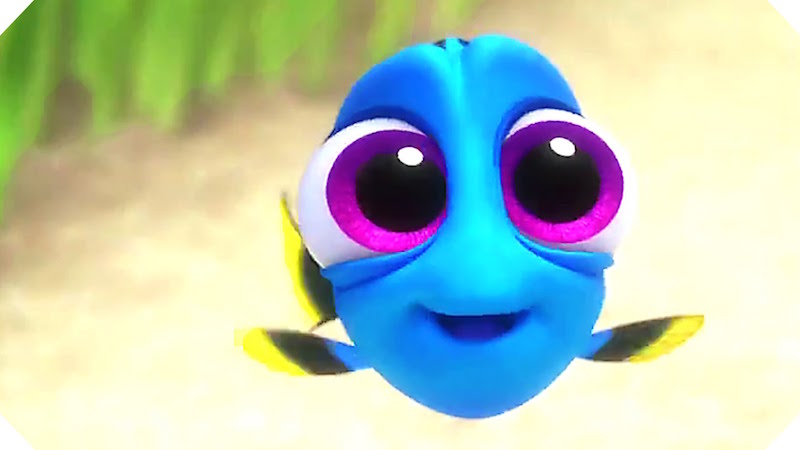Finding Dory has been a smash hit at the box office, grossing nearly $300 million in its first couple weeks at the box office. But as with many movies produced by Disney and Pixar and targeted at younger audiences, there will be huge piles of money to be made selling film related merchandise, in the form of toys, apparel, games, and even aquarium kits and ornaments.
However, unlike many fantasy movies, the inspiration for the star of Finding Dory is not just an imaginary character, but inspired by a living and attractive species of fish. The regal blue tang, Paracanthurus hepatus, has been a favorite of saltwater fish tanks since the beginning of the marine aquarium hobby, and now the species is a worldwide superstar who will become known to a whole generation of kids watching Finding Dory on repeat for the next decade.

By all accounts, this is great news for the producers of Finding Dory who will undoubtedly cash in on huge merchandising sales. Alas, since there is a real living analog of the movie’s star in a widespread and common marine fish, there will also be a whole new generation of beginner fish keepers who will want to set up a marine aquarium so they can enjoy having a personable and attractive living Dory-fish of their own.
The ‘Finding Dory Effect’ was widely predicted, but it didn’t take a crystal ball for those of us in the marine aquarium industry to know that the movie would have as big, if not a bigger impact on recruiting new marine fish keepers than Finding Nemo did in the early 2000s.
On the one hand, this is great news for various companies in the marine aquarium hobby who sell tanks, fish, foods, and everything to keep regal blue tangs alive and healthy at home. On the other hand, the Finding Dory Effect is bringing an even greater spotlight of scrutiny on the marine aquarium hobby in general.

For its part the marine aquarium hobby as a whole has been very proactive at informing would-be new hobbyists. Collectively we’ve been producing countless informational brochures, videos, and articles to educate potential aquarists on whether they should consider whether they are suited to taking care of such a fish, and what they need to get started.
Naturally, with a real live fish gaining so much attention, the response from detractors of the aquarium hobby has been equally vocal in voicing their disdain for the marine aquarium hobby. When it came to keeping marine clownfish as ‘Nemos’ in aquariums, the hobby’s main defense is that clownfish are easily bred and aquacultured, and they are fairly easy to keep in an aquarium as one of your first fish.

But when it comes to regal blue tangs, these fish are more sensitive to captive life, they grow larger and are more demanding of high quality aquarium environments, but most importantly, they have not yet been bred in captivity. The one plus about keeping regal blue tangs in an aquarium is that the hobby targets primarily small juveniles which are quite abundant during certain times of year, before a high attrition rate in the wild.
Thankfully, large adult blue tangs of breeding age and size are not desirable for aquariums and these are mostly left in the wild to be part of the natural environment and to produce the next generations of blue tangs. The truth is that there is a huge and relatively undisturbed population of blue tangs that have are widespread from Africa, throughout the Indian Ocean, the Indo-Pacific and the West Pacific Ocean.

Aquarium fish are collected in only a few locations across the blue tang’s natural range and while the demand will invariably increase for this fish at these sites, 99.9% of wild blue tangs will never see a collecting net. No matter what convincing statistics the aquarium hobby puts up in our defense, the emotional heartstrings that the movie tugs on will surely resonate with environmentalists who believe that not even a single fish should be removed from the ocean.
Criticism of the aquarium hobby is unfair and counterproductive as the collection of ornamental fish by coastal communities is one of the most sutainable ways to add value to corals reefs, preserving them for future generations of Dorys and all her friends. We’re not even part of the way on the uptick in demand for blue tangs in aquariums, and the tanks that new aquarium keepers will clamor for.

All we can do is advise our friends and family on whether or not a blue tang is right for them, and keep putting out as much truthful and useful information about this fish both in aquariums, and their natural environment. We’re pretty impressed with the wealth of information that the aquarium community has already released to inform the public about the natural blue tang, and we’ll keep putting it up here as a hub for everything regarding the Finding Dory Effect.
MASNA’s page on the regal blue tang
https://www.facebook.com/natgeo/videos/10153707971233951/



